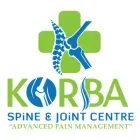If you searched for “low back pain in early pregnancy,” you’re not alone. Many people feel a surprising ache across the lower back before a baby bump appears. Knowing what’s normal, what’s not, and what actually helps can turn worry into a calm, step-by-step plan. This guide explains why low back pain in early pregnancy happens, how to relieve it safely in the first trimester, and when to seek care.
Disclaimer: This article is for educational purposes only and is not a substitute for professional medical advice, diagnosis, or treatment. Always speak with your clinician for personalized guidance.
This comprehensive guide covers the causes, symptoms, red flags, and practical relief strategies for low back pain in early pregnancy. You’ll also learn prevention tactics, a 7-day reset plan, and answers to the most searched questions.

Table of Contents
What low back pain in early pregnancy usually feels like
Before the uterus is large enough to change your silhouette, the body is already adapting. People with low back pain in early pregnancy often describe:
- A dull, band-like ache across the lower back.
- Stiffness on waking that settles after gentle movement.
- Twinges when standing from a chair, bending, or rolling in bed.
- A pulling sensation near the buttocks after long sitting or standing.
- Occasional one-sided discomfort without true sciatica.
These patterns are common and usually reflect normal adaptation rather than a dangerous problem.
Why low back pain in early pregnancy happens (the mechanisms)
Hormonal changes and connective tissue
- Progesterone and relaxin soften ligaments in the pelvis and spine, allowing future childbirth. In the short term, this laxity means muscles work harder to stabilize, which can intensify low back pain in early pregnancy.
- Estrogen alters circulation and fluid balance, sometimes sensitizing tissues.
Micro-postural shifts
Subtle changes in pelvic tilt and ribcage angle begin early. Repeating small misalignments all day (long desk work, standing in one position) can explain low back pain in early pregnancy without any injury.
Uterine growth and fascial referral
Early uterine enlargement and fascial connections can refer a dull ache to the sacrum and lumbar area, contributing to low back pain in early pregnancy.
Circulation and fluid shifts
Rising blood volume and water-sodium balance may amplify normal signals, making low back pain in early pregnancy more noticeable.
When to worry: red flags you should not ignore
Most low back pain in early pregnancy is benign, but call your clinician promptly if you notice:
- Severe or escalating pain unrelieved by rest.
- Back pain with vaginal bleeding, fluid leakage, or strong cramping.
- Fever, chills, or burning urination (possible infection).
- Numbness, weakness, or foot drop, or pain shooting down one leg.
- Night pain that wakes you and does not change with position.
How low back pain in early pregnancy evolves across trimesters
- First trimester: hormones dominate; symptoms fluctuate day to day. Low back pain in early pregnancy typically describes this stage.
- Second trimester: the center of gravity shifts; lumbar curve increases; symptoms may appear after activity.
- Third trimester: ligament laxity peaks; belly support, pacing, and sleep setup matter more.
Root causes and contributors in detail
1) Hormones + ligament laxity
Relaxin and progesterone permit the pelvic ring to widen. Early on, that means muscles around the sacroiliac joints must do extra work, which can create low back pain in early pregnancy even when activity has not changed.
2) Core and hip coordination
With slightly looser ligaments, the body relies more on deep core and hip muscles. If these are deconditioned from long sitting or low activity, micro-strain builds—fueling low back pain in early pregnancy.
3) Sleep position and mattress feel
Side-sleeping without knee support can twist the pelvis. A pillow between the knees and a small towel under the waist often reduces low back pain in early pregnancy on waking.
4) Daily load management
Doing one thing for too long (sitting, standing, housework) stacks load on the same tissues. Rotating tasks and moving briefly every 30–40 minutes helps prevent low back pain in early pregnancy flare-ups.
Quick relief strategies you can start today
The 5–20 Movement Pattern
Brief, frequent movement is friendlier than long workouts during low back pain in early pregnancy:
- Every 30–40 minutes, walk for 2–3 minutes or do 5 slow hip circles.
- Accumulate 15–40 minutes of walking daily, split into short bouts.
- If pain rises during a bout, shorten it next time. If pain rises afterward, cool down with a 60–90-second easy stroll and deep breaths.
First-trimester friendly micro-stretches
- Cat–cow (slow, pain-free range) × 6–8 breaths.
- Seated figure-4 stretch (gentle) × 30–45 seconds each side.
- Pelvic tilts at the wall × 8–10 reps.
- Standing hip hinge with wall support (teaches neutral spine).
These settle muscles irritated by low back pain in early pregnancy without overstretching lax ligaments.

Heat vs. cold
- Warmth (low-setting pad or shower, 10–15 min) helps tight, guarded muscles.
- Cold (wrapped pack, 5–10 min) helps sharp, activity-related spikes.
Either option should help low back pain in early pregnancy within an hour; if not, reassess posture and loads.
Sleep setup checklist
- Side-lying with a pillow between knees and ankles.
- Small folded towel under the waist to maintain a neutral spine.
- Hug a pillow to square the chest if shoulders ache.
Many readers report morning low back pain in early pregnancy drops 30–50% within a week after optimizing sleep supports.
Ergonomics that actually help
Sitting
- Lumbar support (small cushion where the low back curves).
- Hips slightly higher than knees; feet flat on the floor.
- Screen at eye level; elbows close to your sides.
This alignment reduces the repeated strain that feeds low back pain in early pregnancy during laptop work.
Standing
- Weight slightly forward over the mid-foot.
- One foot on a low stool; switch sides every few minutes for long standing.
- Avoid sustained spine extension.
Lifting and chores
- Hinge at the hips, keep the load close, exhale as you lift.
- Split groceries into lighter bags.
- Bring the laundry basket to a waist-height surface before sorting.
Small wins add up when you’re managing low back pain in early pregnancy.
Professional options: when home care isn’t enough
- Physical therapy: an individualized plan blending mobility, gentle strengthening, and pacing. Many patients with low back pain in early pregnancy improve within 2–6 weeks of consistent PT.
- Prenatal massage: reduces muscle guarding and stress reactivity.
- Chiropractic (prenatal-trained): low-force methods may increase comfort.
- Acupuncture: may help pregnancy-related back pain when provided by trained practitioners.
- Medications: acetaminophen is commonly considered if non-drug strategies fall short; avoid NSAIDs unless your clinician specifically advises them.
- Support belts: a pelvic or maternity belt can decrease sacroiliac shear and reduce low back pain in early pregnancy during chores or standing tasks.
Prevention stack: build capacity, lower risk
- Walk most days; target 70–150 minutes per week in short bouts.
- Twice weekly, complete a 10–12 minute gentle strength circuit (wall sits, side-lying clamshells, supported hip hinge, light-band rows).
- Insert movement snacks during long desk blocks.
- Practice 2 minutes of slow nasal breathing after stressful moments.
- Hydrate consistently—one glass on waking, one mid-morning, one mid-afternoon.
A predictable routine keeps low back pain in early pregnancy from dictating your day.
Myth vs. fact—clearing confusion
- Myth: Back pain can’t start this early.
Fact: Weeks 4–8 are a common onset period; biology supports it. - Myth: Complete rest will fix it.
Fact: Gentle, regular movement outperforms prolonged bed rest for low back pain in early pregnancy. - Myth: Exercise is unsafe in the first trimester.
Fact: Appropriately scaled activity is protective; progress gradually with clinician clearance. - Myth: If pain is present, something is seriously wrong.
Fact: Most cases reflect normal adaptation; use the red-flag list to decide when to seek care. - Myth: Belts are only for late pregnancy.
Fact: A light pelvic belt can help earlier if approved by your clinician.
The emotional side: why reassurance matters
Pain is a body alarm, but not every alarm means danger. Understanding that low back pain in early pregnancy is common—and that you have tools—reduces fear. Less fear means less muscle guarding, calmer breathing, and better sleep, which in turn lowers pain intensity. Try journaling short notes on what helps and what flares you; patterns often appear within a week.
Mini case stories (names changed)
- J., 27, software designer: low back pain in early pregnancy appeared at 7 weeks, worst after 90-minute meetings. A sit-stand rhythm (30 minutes sit, 10 minutes stand) plus two short walks cut pain from 6/10 to 2/10 in 10 days.
- R., 31, nurse: soreness peaked after shifts. A light pelvic belt and a 6-exercise micro-routine halved evening discomfort within two weeks.
- T., 34, teacher: morning stiffness eased after adding a towel under the waist and a pillow between knees; cat–cow and pelvic tilts most days produced steadier energy.
Frequently asked questions about low back pain in early pregnancy
What causes low back pain in early pregnancy?
Hormonal ligament laxity, micro-postural shifts, and repetitive daily loads. Deconditioning or previous episodes can prime sensitive tissues.
Is low back pain in early pregnancy normal?
Yes—common and typically short-lived. Track red flags and address triggers like long sitting early.
Can low back pain in early pregnancy signal miscarriage?
Mild, activity-related aches are usually benign. Pain with bleeding, fluid leakage, fever, or worsening cramps needs urgent medical review.
Which exercises are safest during low back pain in early pregnancy?
Walking, wall pelvic tilts, cat–cow in a pain-free range, and gentle hip strengthening. Avoid deep twists or extreme backbends.
What sleep position helps low back pain in early pregnancy?
Side-lying with a pillow between the knees and ankles; add a small waist support to keep the spine neutral.
Are belts helpful for low back pain in early pregnancy?
A light pelvic support belt can decrease sacroiliac shear during chores or prolonged standing.
Can I use heat or ice for low back pain in early pregnancy?
Yes. Warmth helps tight muscles; cold helps activity spikes. Protect the skin and limit sessions to short, comfortable intervals.
When should I see a professional for low back pain in early pregnancy?
If home strategies don’t help within 1–2 weeks, or sooner if red flags appear. A clinician can tailor guidance and coordinate safe therapies.
Which medications are considered for low back pain in early pregnancy?
Discuss acetaminophen with your clinician; avoid NSAIDs unless specifically instructed.
Will low back pain in early pregnancy last the entire pregnancy?
Not necessarily. Many people improve as routines stabilize and strength returns. Prevention habits lower recurrence risk.
Evidence snapshots and trusted reading
High-quality guidance emphasizes education, activity, and reassurance as first-line care for pregnancy-related back pain. Review plain-language overviews from:
- CDC — Pregnancy health overview: https://www.cdc.gov/pregnancy/
- Mayo Clinic — Pregnancy week-by-week & symptoms: https://www.mayoclinic.org/
A practical 7-day reset plan for low back pain in early pregnancy

Day 1: Audit your day. Mark the three longest sitting blocks and insert two-minute walks. Note when low back pain in early pregnancy is worst.
Day 2: Set up sleep supports (knee pillow, waist towel). Cat–cow × 8 breaths before bed.
Day 3: Add the 5–20 Movement Pattern and one 10-minute easy walk after lunch.
Day 4: Start the gentle strength circuit (10–12 minutes). Keep every move pain-free.
Day 5: Trial evening heat and reassess morning stiffness.
Day 6: Test a light pelvic belt during chores or shopping; remove if symptoms increase.
Day 7: Review notes. Keep what helped. If pain remains ≥4/10 most of the day, book an appointment and bring your log.
Quick reference: do/don’t table
Do
- Break up long sits.
- Support side-sleeping.
- Use gentle, frequent movement.
- Breathe slowly during flare-ups.
- Seek help early if red flags appear.
Don’t
- Push through sharp pain.
- Hold one posture for hours.
- Start new high-intensity routines.
- Self-prescribe NSAIDs.
- Ignore progressive symptoms.
Key takeaways
- Low back pain in early pregnancy is common, usually benign, and highly modifiable.
- Education, small ergonomic changes, and gentle movement solve a large share of cases.
- Know the red flags and act on them promptly.
- Build prevention habits now; they pay off in later trimesters too.
Suggested Reading
- Is Low Back Pain a Sign of Pregnancy? Common Myths vs Facts
- What Causes Lower Back Pain in Females? From Hormones to Heels, Here’s the Real Story

Dr. Vivek Arora (BPT, MPT, FRCPT, MIAP) is a licensed physiotherapist with over 20 years of experience in spine and joint care. He specializes in evidence-based physiotherapy, patient education, and long-term recovery without surgery. Passionate about empowering patients through knowledge, Dr. Arora shares expert-backed health content for a global audience.
To know more about Dr. Vivek’s journey, click here.
